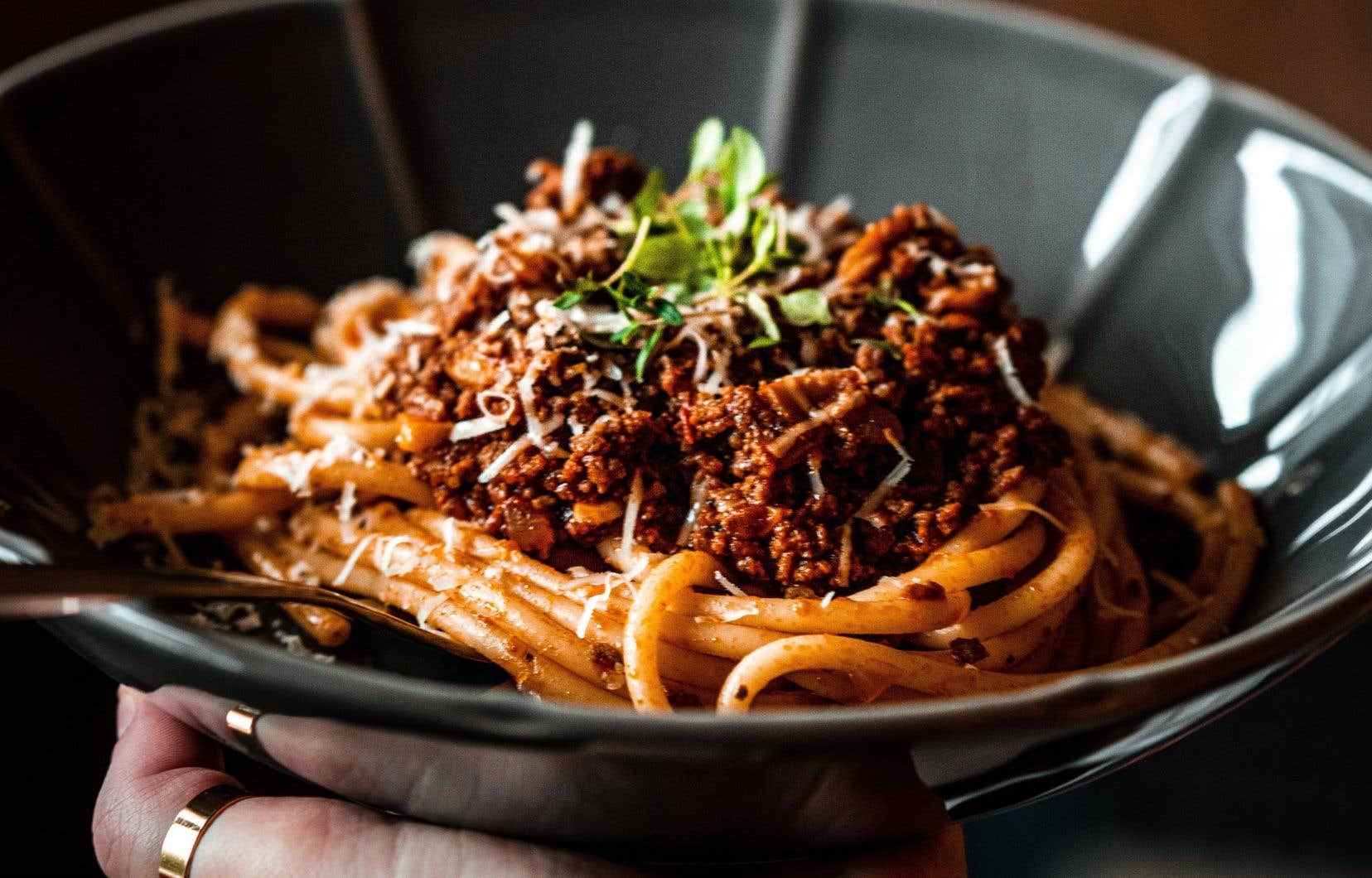This text is part of the special book Plaisirs
Who has never eaten lasagna, drank spritz or tasted a tiramisu? Italian cuisine is firmly rooted in the culinary culture here. According to Italian-Montreal chef Michele Forgione, this is largely thanks to the openness and curiosity of Quebecers and to the “legends” of Italian culinary culture like Elena Faita and Sister Angèle. Discover seven little-known facts about how this delicious cuisine influenced ours.
Traditions that last longer in Quebec than in Italy
For many Italian immigrants it is important to continue making sauces, preserves and other typical preparations, so as not to forget this skill. “This is what connects them to Italy, to the country they left,” explains Michele Forgione, who hosts the show. Mangia Quebecsoon to be broadcast on the TLN channel, and co-owner (with his partner Stefano Faita) of the restaurants Gema, Chez Tousignant, Vesta and Impasto.
He adds that Italians who still live in the country feel less need to continue these traditions, probably because they don’t risk losing their culinary culture. Now, it is mainly Quebecers who equip themselves at Quincaillerie Dante, a kitchenware store in Little Italy in Montreal, to make preserves, homemade pasta and other Italian specialties.
A habit from Italy
Not so long ago, it was not very common for Quebecers to go to cafes. In the 1950s, only Italians (or almost) went to these places to sip a small cup of black gold. It is therefore a tradition established by the Italo-Quebecers, for whom these places are real social clubs where people read the newspapers, socialize and watch a soccer game. The Caffè Italia, located in Little Italy, and the Café Olimpico, which is located in Mile End, are true Italian-Montreal institutions.
The south of Italy is very represented
There are 20 regions in Italy, and each of them has its culinary specialties. However, more than 75% of Italian immigrants to Canada come from the southern Italian countryside, according to the Canadian Encyclopedia. Thus, the Italian dishes that we know best are mainly from the bottom of the boot, such as pizza margherita, pasta marinara and all’arrabbiata, eggplant with parmesan, etc.
“Northern Italians have become used to cooking with butter, because there are no olive trees in their area. A typical northern dish is risotto Milanese,” explains Sandro Cappelli, director of the Instituto Italiano di Cultura, the cultural section of the Italian Consulate in Montreal. Sandro Cappelli adds that central Italy, his place of origin, is not very well represented here in the restaurants. In particular, we owe this region meat dishes such as ragu Tuscan and Steak Florentine.
From Italy to the whole world
If the simple fact of putting Brie on a pizza was once seen as sacrilege, then what about pineapples and products from here? Chef Michele Forgione doesn’t mind, because he wants to have fun in the kitchen. [en Amérique du Nord], why not have a little fun? launches the one who offers a Hawaiian pizza in one of his restaurants, Pizzeria Gema, on which we find in particular homemade smoked maple ham and a mozzarella di bufala from here.
“In short, for me, it’s important to perpetuate Italian customs, but with the land and the Quebec terroir, so I adapt mainly according to local ingredients and their availability,” he adds.
Mysterious red peppers
In the 1950s, the Jean-Talon market was a landmark for many Italians who lived in the area and who were happy to rub shoulders with artisans there. However, Quebecers and Italian immigrants did not buy the same vegetables. For example, Quebecers tended to buy Iceberg lettuce, while Italians preferred radicchio, the book says. Montrealissimo. Living and eating Italian written by Lynne Faubert and Michele Forgione in 2016. Italian and Quebec merchants were even trading peppers, because Quebecers did not know what to do with red peppers. Italian merchants therefore exchanged their green peppers for the red ones, already known in Italian culinary culture.
The tomato, a fruit from the American continent
As surprising as it may seem, the Italians did not have tomatoes before the colonization of the South American continent. Indeed, it was the Spanish conquistadors who first brought it back from South America. This fruit then became an essential in Italian cuisine, among other things because it was easily accessible. The duo of pasta and tomato sauce is quite recent. It dates from the end of the 19the century.
A delicious and, above all, simple culinary culture
For Michele Forgione, a good Italian dish does not require more than three to four interventions. “With, for example, strawberries from Quebec, the best in the world, then a balsamic reduction from Genova [Gênes] and a biscuit, we have something delicious and it’s very simple. Let the food shine! It is in large part because of this simplicity that Italian cuisine is so popular here, believes the director of the Instituto italiano di cultura de Montréal, Sandro Cappelli.
